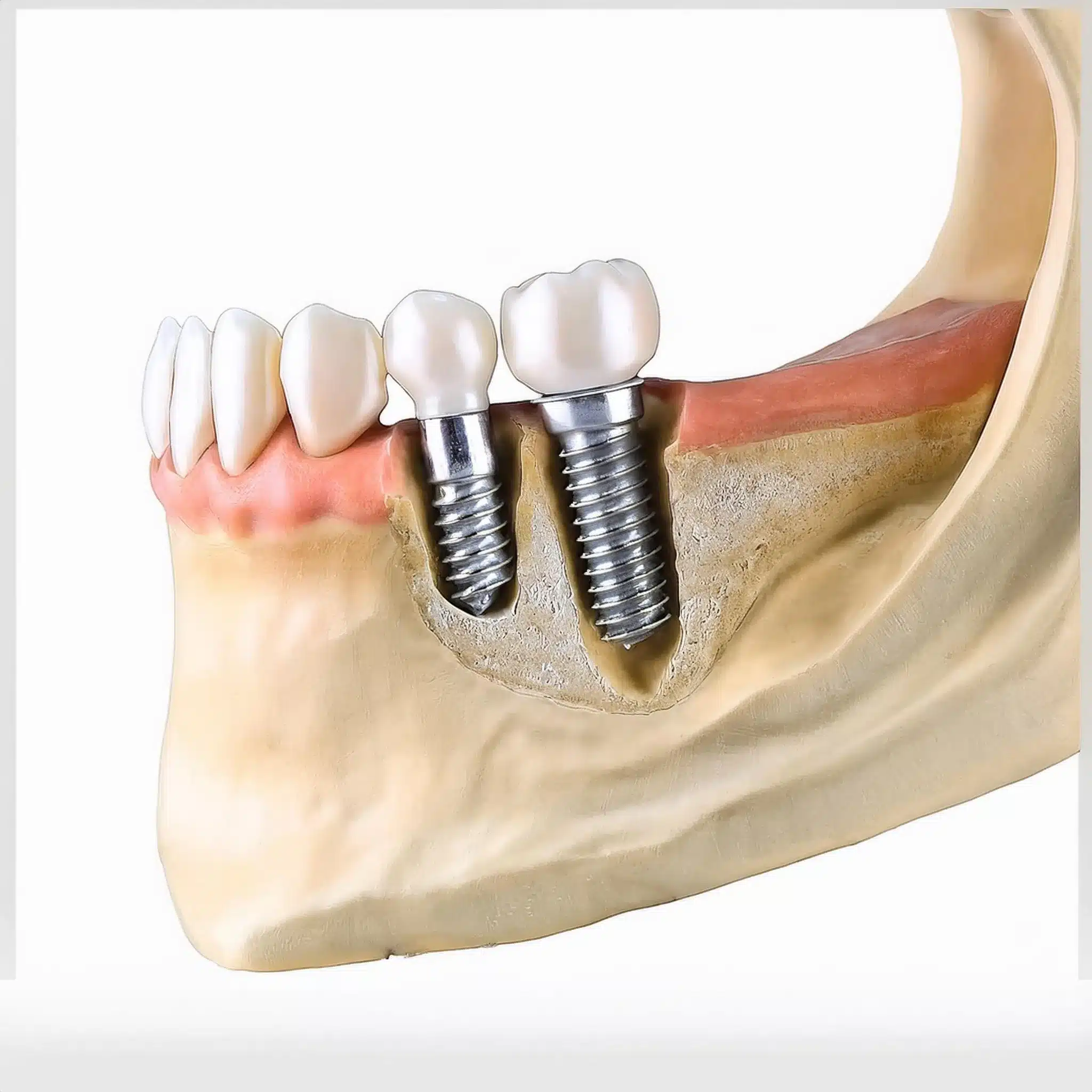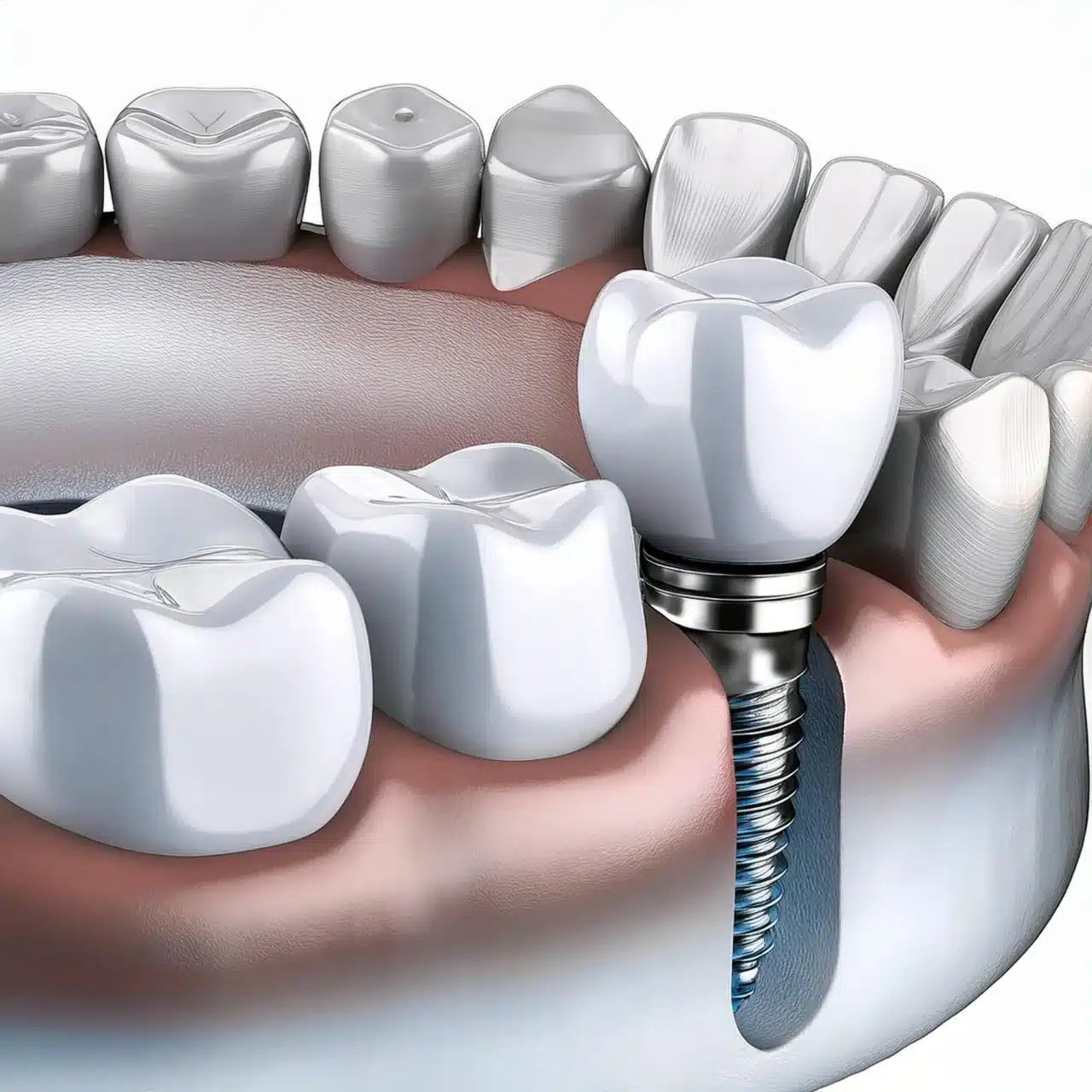Dental implants with bone loss can be intimidating if you want to get your smile and confidence back.
If you’re wondering if you can get dental implants with bone loss or concerned about the success rates and cost, you’re not alone.
Can You Get Dental Implants with Bone Loss?
Yes, you can get dental implants with bone loss. Bone grafting, sinus lifts, ridge augmentation, and zygomatic implants are effective options for patients with severe bone loss. These procedures restore adequate bone volume and density to support implants. Studies show sinus lift bone grafts have a 98.73% implant survival rate.

Bone Loss and How It Affects Dental Implants
What Causes Bone Loss?
Bone loss in the jaw is a concern for those who want dental implants.
It can be caused by:
Tooth Loss: When a tooth is lost, the jawbone in that area will start to deteriorate due to lack of stimulation.
This is because the roots of natural teeth provide essential stimulation to maintain bone density.
Periodontal Disease: This gum disease can destroy the supporting bone around teeth, resulting in bone loss.
It’s the leading cause of tooth loss in adults and can severely affect the jawbone’s health.
Trauma or Injury: Physical trauma to the jaw can damage the bone and lead to resorption over time.
- Medical Conditions: Conditions such as osteoporosis can weaken bones throughout the body, including the jaw.

How Does Bone Loss Affect Dental Implants?
Bone loss can affect the success of dental implants. Here’s how:
Insufficient Bone Volume: Implants need a certain amount of bone to anchor.
Bone loss can result to insufficient volume and it’s hard to place implants without additional procedures like bone grafting.
Implant Stability: Without enough bone, implants won’t achieve the needed stability and will increase the risk of failure.
According to studies, maintaining bone height is key to implant success and aesthetics (1)
Treatment Options for Bone Loss
The question of who can get dental implants depends largely on bone health and overall oral condition.
Bone Grafting
Bone grafting is a procedure that adds bone material to the jaw to increase volume and density and to create a stable base for implants.
This is necessary for patients with severe bone loss to have enough support for the implant.
According to studies, bone grafting can improve implant success rates, with long-term stability achieved in most cases (2).

Sinus Lift
A sinus lift is a surgical procedure that adds bone to the upper jaw in the area of molars and premolars when the sinuses are too close to the jaw for implants to be placed.
This procedure involves lifting the sinus membrane and inserting bone graft material into the space to increase bone height and allow for implant placement.
Research shows high implant survival rate post sinus lift, with grafted procedures having 98.73% success rate (4)
Ridge Augmentation
Ridge augmentation is done to restore the natural contour of the gums and jaw that may have been lost due to bone resorption.
This procedure involves placing bone graft material along the ridge of the jaw to have enough bone volume for implant placement.
It’s necessary to have enough bone density and volume for successful implants (5).
Tissue Grafting
Tissue grafting involves transplanting soft tissue to areas where gum tissue has receded, for both function and aesthetics.
This is useful in cases where gum recession has exposed the implant or affected the smile line.
It enhances the appearance of the gums around implants and provides additional support and protection for the implant (4).
| Technique | Success Rate | Source |
|---|---|---|
| Sinus Lift | 98.73% | Reference 4 |
| Bone Grafting | High success rate | Reference 2 |
| Ridge Augmentation | Improved implant success | Reference 5 |
Before Your Implant Surgery
Assessment and Planning by Your Dentist
Before you undergo dental implant surgery, an assessment and planning phase is necessary.
This involves a thorough dental exam, including dental X-rays and 3D images to evaluate the condition of your teeth and jaw (5).
Your dentist will also review your medical history to see if you’re a good candidate for the procedure.
Diagnostic Tests: A full clinical evaluation includes an exam of your mouth, dental X-rays and 3D images to assess the health of your oral cavity and determine if implants are suitable (5, 4).
Preoperative Instructions: Follow preoperative instructions carefully, don’t eat or drink anything after midnight the night before surgery; and wear comfortable clothes (3, 4).
What to Expect
Knowing what to expect during dental implant surgery will help reduce anxiety and make the process smoother.
Sedation Options: Depending on your comfort level and the complexity of the procedure, sedation options may be discussed to make you comfortable during the surgery (5).
Step-by-Step: The procedure involves preparatory steps like bone grafting if necessary, then implant placement (1).
Post-Surgery Care: Follow post-operative instructions to ensure proper healing and minimize complications.The dental implant step by step process and timeline involves preparatory steps like bone grafting if necessary, then implant placement (1).

Post-Operative Care and Maintaining Implants
Long-Term Care for Dental Implants
Proper postoperative care and long-term maintenance are key to successful dental implants.
Here are some tips:
-
Immediate Post-Surgery Care: Follow your dentist’s instructions carefully to ensure proper healing and minimize complications.
This may include not eating certain foods, taking prescribed medications, and attending follow-up appointments (2).
-
Oral Hygiene: Practice good oral hygiene habits like regular brushing and flossing to prevent plaque buildup and gum disease around the implant (4).
-
Regular Check-Ups: Schedule regular check-ups with your dentist to monitor the health of your implants and address any issues (5).
Avoid Smoking: Smoking can reduce the success rate of dental implants.Quitting smoking can extend the life of your implants (2).Who can get dental implants with bone loss? Generally, individuals who are in good health, have healthy gums, and sufficient bone to support the implant can be candidates. However, those with severe bone loss may require additional procedures like bone grafting or zygomatic dental implants to ensure the success of the implant.

Conclusion & Key-Takeaways
Key Takeaways:
Dental implants can be done even with bone loss using bone grafting, sinus lift, and ridge augmentation.
Proper postoperative care and long-term maintenance are key to successful dental implants.
Nutrition plays a big role in the healing process; a diet rich in calcium, vitamin D, and protein helps osseointegration (2).
Lifestyle choices like smoking can affect the life of dental implants (8).
Conclusion:
Dental implants with bone loss require careful planning and execution.
By understanding the causes of bone loss, exploring treatment options, and following postoperative instructions, patients can achieve great results.
At Excelentis, we are committed to providing comprehensive care and guidance to get the best possible outcome for our patients.

FAQ
References
Esposito M, Grusovin MG, Coulthard P, et al. Interventions for replacing missing teeth: dental implants in fresh extraction sockets. Cochrane Database Syst Rev. 2006;(3):CD005968.
Article: Interventions for replacing missing teeth: dental implants in fresh extraction sockets
Panchal M, Khare S, Khamkar P, et al. Dental implants: A review of types, design analysis, materials, additive manufacturing methods, and future scope. Procedia CIRP. 2022;100:1-10.
Article: Dental implants: A review of types, design analysis, materials, additive manufacturing methods, and future scope
Lindeboom JA, Frenken JW, Kroon FH, et al. Immediate loading versus immediate provisionalization of single-tooth replacements: a prospective randomized study with BioComp implants. J Oral Maxillofac Surg. 2006;64(6):936-942.
Article: Immediate loading versus immediate provisionalization of single-tooth replacements
Albrektsson T, Zarb G, Worthington P, et al. The long-term efficacy of currently used dental implants: a review and proposed criteria of success. Int J Oral Maxillofac Implants. 1986;1(1):11–25.
Article: The long-term efficacy of currently used dental implants
Buser D, Sennerby L, De Bruyn H. Modern implant dentistry based on osseointegration: 50 years of progress, current trends and open questions. Periodontol 2000. 2017;73(1):7-21.
Article: Modern implant dentistry based on osseointegration



